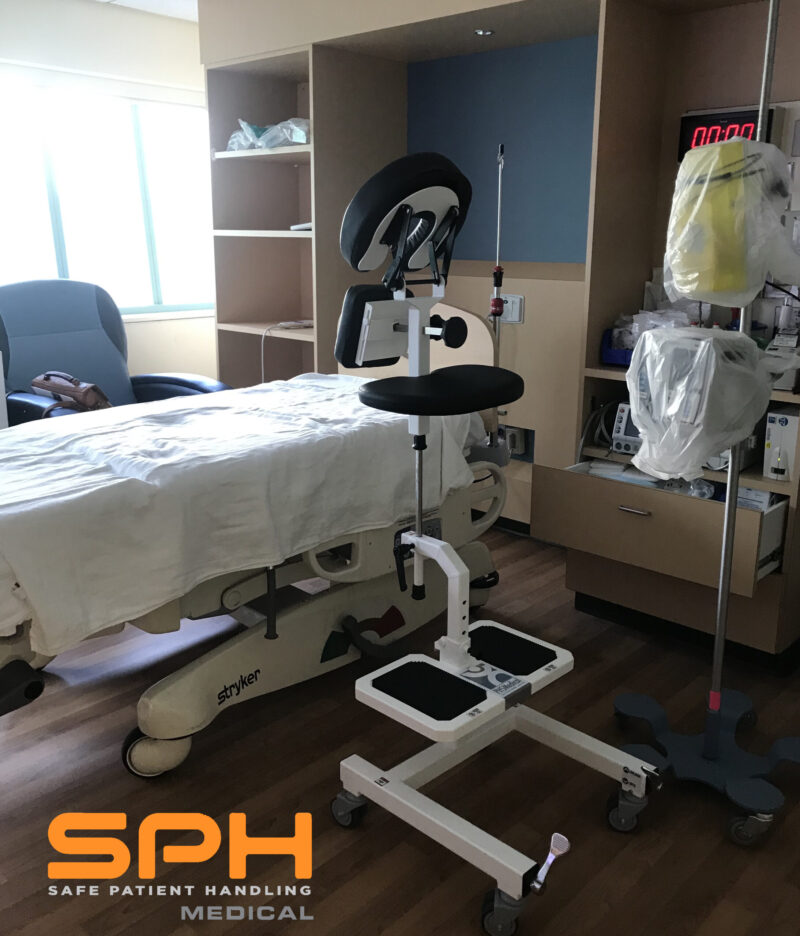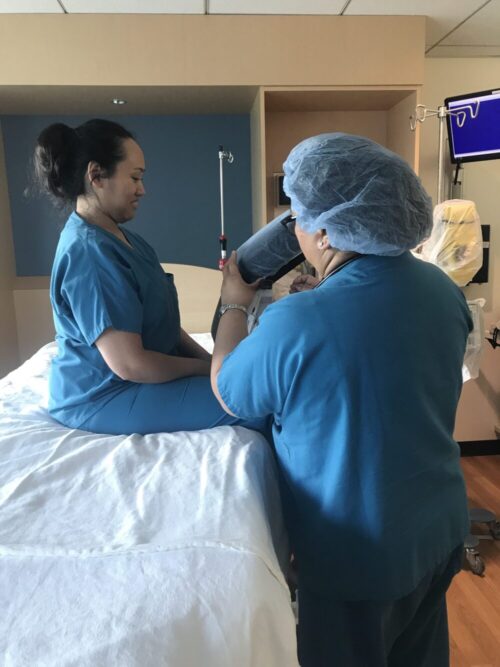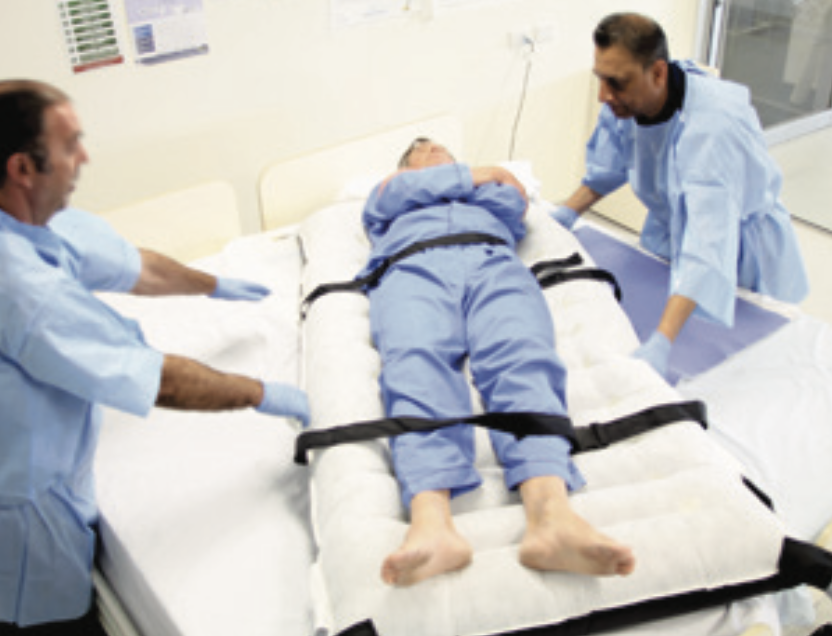Patient Safety with an EPD
Invasive procedures involving conscious patients are tricky. It can be difficult for a patient to maintain a static position during this important procedure. A sudden movement from the patient may cause unnecessary pain and discomfort. To reduce the risk of improper epidural placement and to eliminate the manual handling of the patient by the nurse, SPH Medical can improve overall safety and efficiency with an EPD. One might not see an epidural placement as involving manual patient handling but this common procedure puts nurses and patients at risk every day. The strain of bearing a patient’s weight when holding them in position and applying counter pressure can cause neck shoulder and even back injuries to nursing staff. Nurses and nursing assistants are twice as likely than other professions to deal with musculoskeletal disorders or MSD’s that keep them out of work.
Improving Epidural Placement
An epidural is a common way for an anesthesiologist to provide pain relief during labor and delivery. The doctor delivers a shot that goes directly into the space near the patient’s spinal cord. In some cases, patients receive a spinal block. In this case, a catheter delivers a regular stream of anesthetic to prevent pain for prolonged labor or surgical procedure.
To ease the procedure for both the doctor and the patient, it is best to have the patient in a position that opens the spinal vertebrae. In the past, staff would accomplish this by laying patients on their sides.
However, it is more effective for patients to sit upright and bent forward with a curved spine. Without the right equipment, holding this position might involve a staff member giving physical support. With an epidural placement device, or EPD, the patient can sit naturally and comfortably through the procedure.
How an EPD Works
When medical staff members are trying to get a patient in the proper position, they might use a surgical tray or bedside table and a footstool. When you are using equipment for a task for which it was not designed, there is an increased risk of tipping and injury. Also, patients come in different shapes and sizes. A shorter patient will need a higher footstool and lower bedside table tray to obtain the proper curve of the spine.
 An epidural positioner is a safe patient handling device designed specifically to perform this task. The standard model has an adjustable headrest and armrests that support the upper body, and adjustable footrests keep the lower body at the correct angle. Once everything locks into place, the sturdy device handles the weight of the patient. When an anesthesiologist gives an epidural or spinal block, he or she can rest assured that the patient will be still and well-supported during the procedure.
An epidural positioner is a safe patient handling device designed specifically to perform this task. The standard model has an adjustable headrest and armrests that support the upper body, and adjustable footrests keep the lower body at the correct angle. Once everything locks into place, the sturdy device handles the weight of the patient. When an anesthesiologist gives an epidural or spinal block, he or she can rest assured that the patient will be still and well-supported during the procedure.
Additional Uses
As more anesthesiology departments began to adopt the use of an epidural positioner, other medical specialists saw potential applications. The same position that aids the placement of an epidural is also helpful during thoracentesis.
Imaging departments often carry out this procedure to treat pleural effusions. When there is liquid in the space between the lungs and chest wall, it makes breathing difficult. Guided by imaging equipment, a medical staff member inserts a hollow needle between the ribs of the patient to relieve the pressure and collect samples.
Once again, this is a procedure where the patient must stay in one position for an extended period. Using the epidural positioner helps separate the patient’s ribs and makes it easier to perform the insertion. The patient can stay in place without discomfort or requiring support from the staff.
Safety for Both Staff and Patients
At SPH Medical, we specialize in solutions that improve patient care and reduce risk of injury to both the patient and the caregiver. Procedures like an epidural or thoracentesis are more efficient and less stressful for patients when they are properly positioned. Safe patient handling procedures prevent unnecessary staff injuries and lost time. For institutions, this leads to an overall reduction in frequency and severity of MSD’s to a very skilled workforce, our nurses. Investing in Safe Patient Handling provides a well documented return on investment for everyone. Having access to the proper assistive equipment means improved patient outcomes, and lower costs for the hospital.



